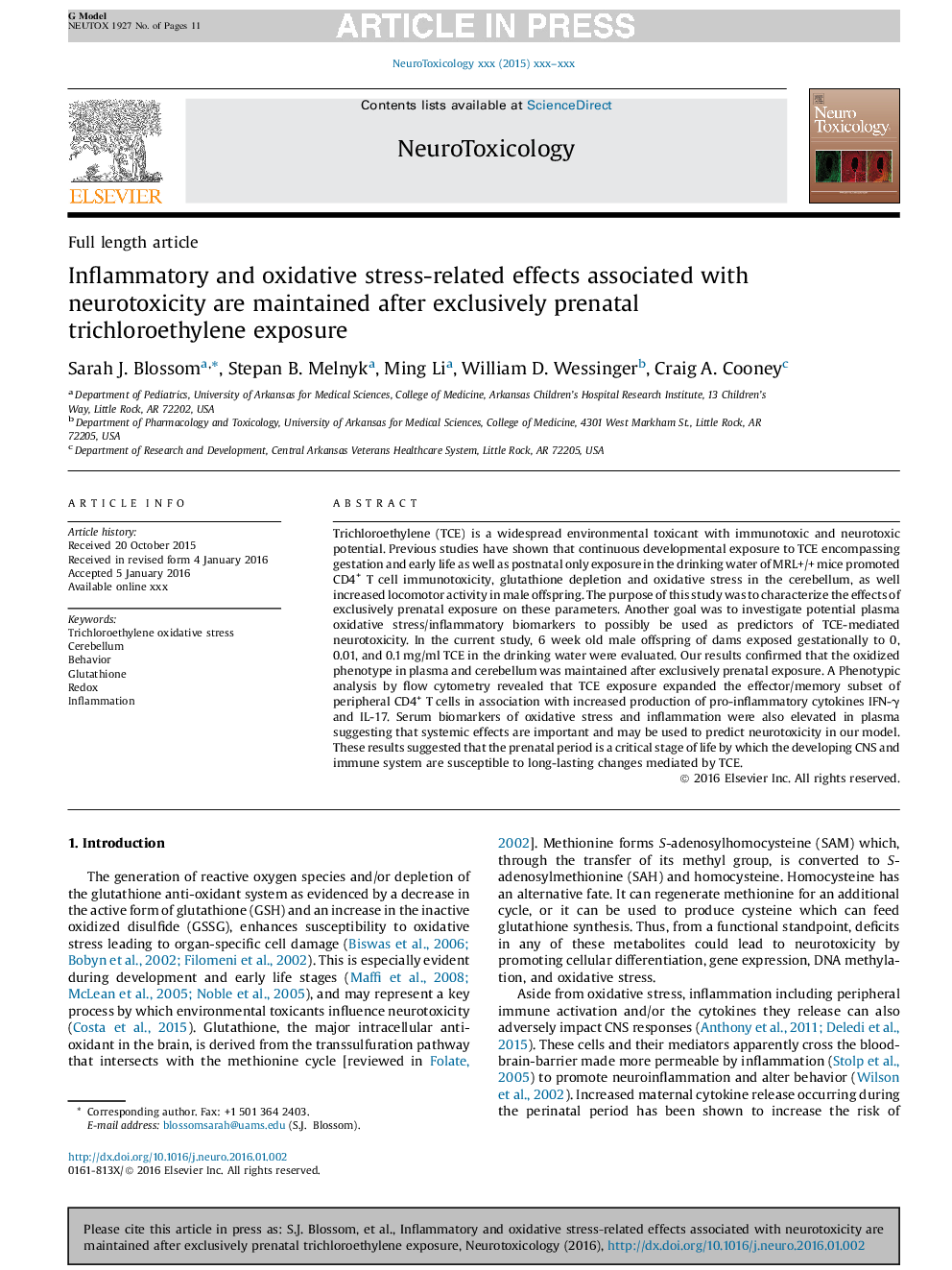| Article ID | Journal | Published Year | Pages | File Type |
|---|---|---|---|---|
| 5560954 | NeuroToxicology | 2017 | 11 Pages |
Abstract
Trichloroethylene (TCE) is a widespread environmental toxicant with immunotoxic and neurotoxic potential. Previous studies have shown that continuous developmental exposure to TCE encompassing gestation and early life as well as postnatal only exposure in the drinking water of MRL+/+ mice promoted CD4+ T cell immunotoxicity, glutathione depletion and oxidative stress in the cerebellum, as well increased locomotor activity in male offspring. The purpose of this study was to characterize the effects of exclusively prenatal exposure on these parameters. Another goal was to investigate potential plasma oxidative stress/inflammatory biomarkers to possibly be used as predictors of TCE-mediated neurotoxicity. In the current study, 6 week old male offspring of dams exposed gestationally to 0, 0.01, and 0.1 mg/ml TCE in the drinking water were evaluated. Our results confirmed that the oxidized phenotype in plasma and cerebellum was maintained after exclusively prenatal exposure. A Phenotypic analysis by flow cytometry revealed that TCE exposure expanded the effector/memory subset of peripheral CD4+ T cells in association with increased production of pro-inflammatory cytokines IFN-γ and IL-17. Serum biomarkers of oxidative stress and inflammation were also elevated in plasma suggesting that systemic effects are important and may be used to predict neurotoxicity in our model. These results suggested that the prenatal period is a critical stage of life by which the developing CNS and immune system are susceptible to long-lasting changes mediated by TCE.
Related Topics
Life Sciences
Environmental Science
Health, Toxicology and Mutagenesis
Authors
Sarah J. Blossom, Stepan B. Melnyk, Ming Li, William D. Wessinger, Craig A. Cooney,
